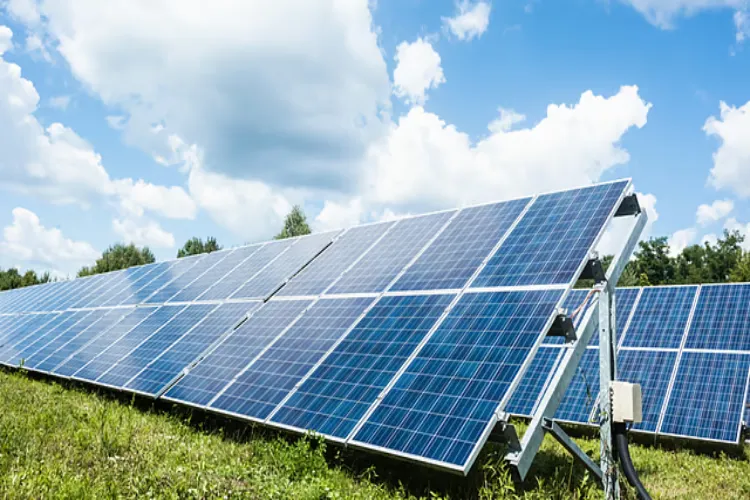
New Delhi
Recovering and reusing materials from discarded solar panels could be a Rs 3,700 crore worth market opportunity in 2047, according to a pair of new independent studies released today by the Council on Energy, Environment and Water (CEEW).
The studies also highlight that, if this potential is realised, recovering valuable materials such as silicon, copper, aluminium, and silver from solar waste could meet 38 per cent of the sector's manufacturing inputs in 2047 and avoid 37 million tonnes of carbon emissions by replacing virgin resources with recycled ones. India's solar module recycling market is currently at a very nascent stage, with only a few commercial recyclers operating.
The twin CEEW studies provide India's first comprehensive blueprint for building a domestic solar recycling ecosystem that supports both clean energy and manufacturing self-reliance. By 2047, India's installed solar capacity could generate over 11 million tonnes of solar waste, largely from crystalline-silicon modules. Managing this would require nearly 300 recycling plants across the country and INR 4,200 crore in investment, the studies estimate.
Rishabh Jain, fellow, CEEW, said, "India's solar revolution can power a new green industrial opportunity. By embedding circularity into our clean energy systems, we can recover critical minerals, strengthen supply chains, and create green jobs--while turning potential waste into lasting value. Building this circular economy is most important for India's resilient and responsible growth."
The CEEW study also highlights that solar recycling in a formal setup remains unviable today, with recyclers facing losses of INR 10,000-12,000 per tonne.
The biggest operational expense is buying back waste modules, which accounts for nearly two-thirds of the total (around INR 600 per panel), followed by processing, collection, and disposal costs.
The report added that for recycling to become profitable, modules would need to be priced below Rs 330, or recyclers supported through EPR certificate trading, tax incentives, and R&D investments in efficient recovery of silicon and silver.
Akanksha Tyagi, Programme Lead, CEEW, added, "Solar recycling can be the bridge between India's clean energy and manufacturing ambitions. Beyond managing waste, it's an opportunity to innovate--by designing panels for easier recovery, improving material purity, and creating new value chains around critical minerals. Introducing EPR targets, creating demand for circular products, improving data transparency, and designing for recyclability could turn India's solar waste challenge into a green industry opportunity."
To enable large-scale adoption, the CEEW studies recommend EPR targets for collection and recovery under the E-Waste (Management) Rules, 2022, led by the Ministry of Environment, Forest and Climate Change, and a Circular Solar Taskforce under the Ministry of New and Renewable Energy to align policy, finance, and industry action.
They also propose a centralised solar inventory to identify waste hotspots, and urge producers to share material data and design modules for easy disassembly.
READ MORE: Bihar Elections: Voters to decide fate of many bigwigs in first phase
Together, these steps would build robust collection systems, spur R&D in material recovery, and embed circularity into India's renewable energy missions--keeping the clean energy transition resource-resilient and self-sustaining.
